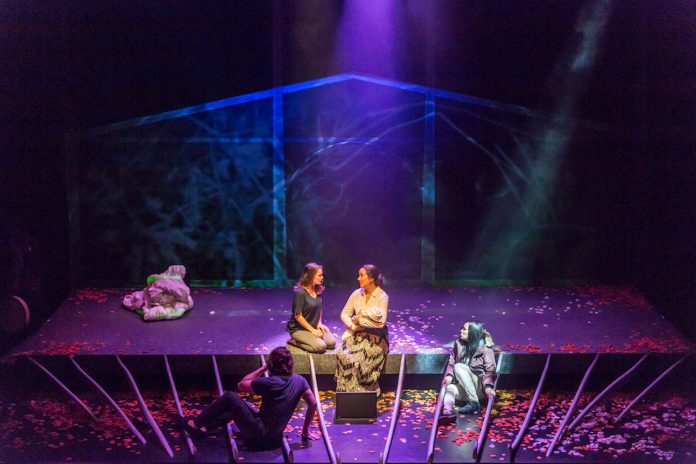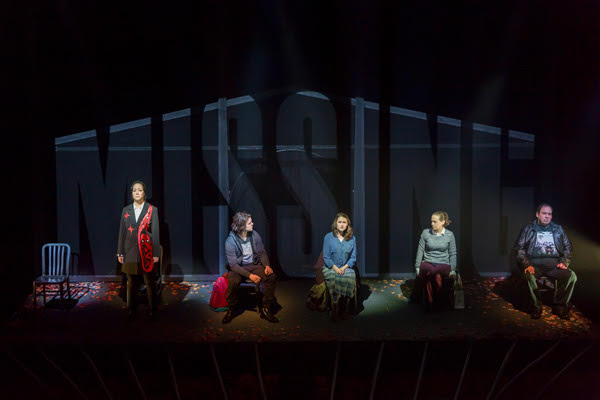
Missing
Brian Current, June 6 2018
It is little known internationally, and insufficiently domestically, that at least 1200 Indigenous women have disappeared and are presumed murdered in Canada since 1980. This is a national crisis that (non-Indigenous) Canadians are just beginning to wake up to and is especially galling considering that we continuously celebrate our tradition of fostering human rights and social justice abroad.
Indigenous Canadians have of course known about these crimes all along. They have historically had an unspeakably difficult time in Canada, from outright genocide during colonial years, to an abhorrent state-sanctioned residential school system of forced separation from family, language and culture (and where many died – many of these schools had graveyards), to forced adoptions during the 1960s, to forced sterilization, to today where many Indigenous families are currently living in extremely difficult conditions with high rates of suicide and addiction.
And since 1980, 1200 Indigenous women have gone missing and are presumed murdered. 1200. Imagine if 1200 white women vanished from Ottawa or Portland or Victoria or Adelaide, there would be major international outcry. Racism has certainly played a role in Canada’s national silence, even complicity, regarding these missing women and girls, and the number of missing is surely much higher than the 1200 reported. Activists put it at more than 4000.
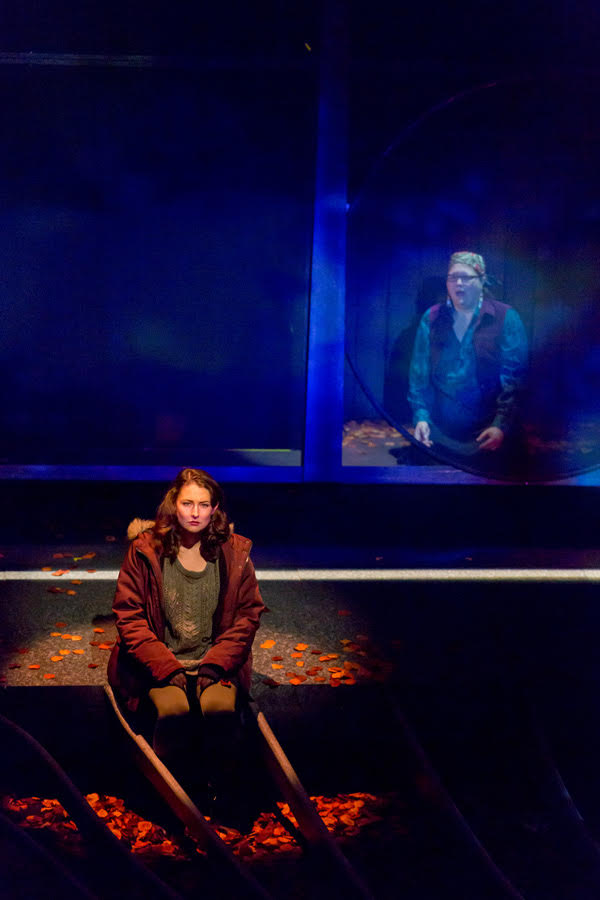 It is not something that happened in the past. During just the time I was working on the opera, four Indigenous women were murdered in Winnipeg and two went missing in Ontario north of Toronto.
It is not something that happened in the past. During just the time I was working on the opera, four Indigenous women were murdered in Winnipeg and two went missing in Ontario north of Toronto.
In 2016, City Opera Vancouver and Pacific Opera Victoria got in touch to ask if I would consider auditioning as a composer for a project they were developing about the Missing Women. This meant that I would set a scene for their jury, who would not know who the composers were. At the time, I had heard of the missing Indigenous women, but it was simply a headline. Like nearly every other non-Indigenous Canadian, I would sigh and simply turn the page. Fortunately, the jury chose my submission, and this started a sequence of events that opened my eyes to Canada’s murderously unjust treatment of its Indigenous people. Throughout the process of writing the opera, I felt a sense of being awakened to an urgent crisis right in our back yard. I still think about these crimes often, and post, and vote based on it. I hope that anyone in Canada’s larger cities and abroad who sees and hears this opera will have a similar eye-opening experience.
The libretto was written by the astoundingly gifted Indigenous playwright and filmmaker Marie Clements. It is beautifully authentic and wonderfully musical. You can check out her important work here. She has said that it was important to work with a composer who is not Indigenous, as the story is about the coming together of Indigenous and non-Indigenous worlds. Throughout, it was a priority for me that I did not ‘manhandle’ the libretto in any way, as was the composer’s traditional inclination in the past, but rather to provide a platform for or amplification of her story. The producers were sensitive to this as well: four out of the seven cast members were of Indigenous background, as was half of the designers and crew. Everyone immediately understood the sense of mission surrounding this piece and got to work.
Right from the beginning, it was tremendously important that all materials relating to Indigenous language and culture were treated with absolute sensitivity. I was grateful that our producers began the entire process, before one word or note was written, by consulting widely within the Indigenous community in Vancouver. At every workshop, presentation or large meeting, there were Indigenous land acknowledgements, cedar brushing and smudging ceremonies, all of which were new to me, and all of which I became more and more grateful to be part of. I can only hope that these ceremonies provided even a small amount of comfort to the communities affected by the tragedy.
There a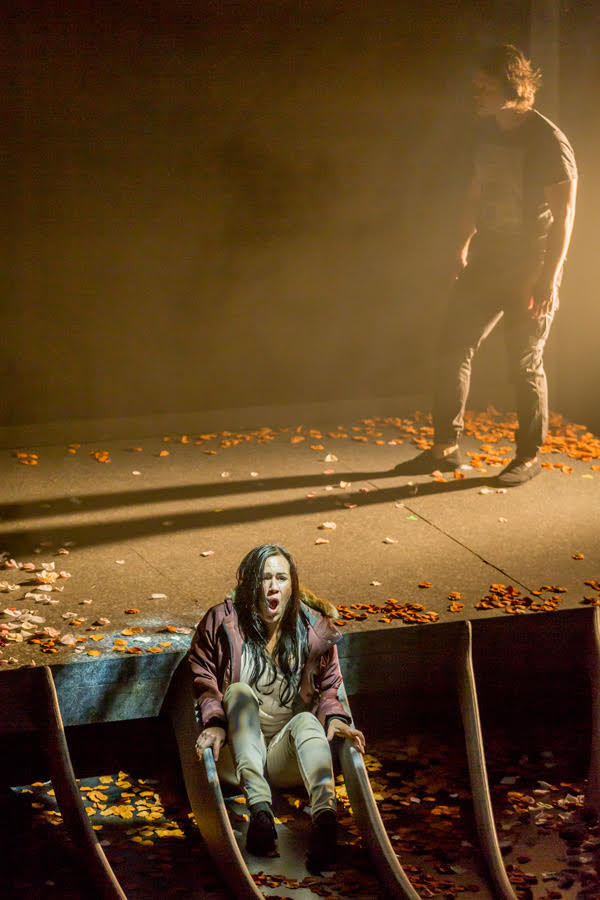 re roughly 60 distinct Indigenous languages in Canada and they are as different from one another as Finnish is from Japanese. About a 3rd of the opera is sung in Gitsxan, the language spoken by the Indigenous community up the West Coast of British Columbia. This is the region of the so-called Highway of Tears, where many of the women were kidnapped and where much of the opera takes place. My hero of the project must certainly be Vince Gogag, who provided the translation and pronunciation of the Gitsxan, as well as advised on cultural protocols related to the Gitsxan community. Gitsxan is a wonderfully beautiful language, with popping high consonants and vowels made completely of air sounds. It was a real pleasure to take recordings of Vince speaking in his first language and spend several weeks painstakingly transcribing them into musical notation. Melodies and rhythms were created to preserve Vince’s speech patterns. Also, there is a wedding scene sung in Gitsxan where we asked Vince if he might find a traditional wedding song from his community. He believes that these have now been lost, but he was kind enough to share with me a recording of his grandfather singing traditional Gitsxan songs, which I spent a great deal of time with, and felt like I got to know his grandfather a little bit. With Vince’s kind permission, the melodies of these folksongs were used as the melodic structure of the wedding scene in the opera, with the rhythms of the language informing the rhythms of the music.
re roughly 60 distinct Indigenous languages in Canada and they are as different from one another as Finnish is from Japanese. About a 3rd of the opera is sung in Gitsxan, the language spoken by the Indigenous community up the West Coast of British Columbia. This is the region of the so-called Highway of Tears, where many of the women were kidnapped and where much of the opera takes place. My hero of the project must certainly be Vince Gogag, who provided the translation and pronunciation of the Gitsxan, as well as advised on cultural protocols related to the Gitsxan community. Gitsxan is a wonderfully beautiful language, with popping high consonants and vowels made completely of air sounds. It was a real pleasure to take recordings of Vince speaking in his first language and spend several weeks painstakingly transcribing them into musical notation. Melodies and rhythms were created to preserve Vince’s speech patterns. Also, there is a wedding scene sung in Gitsxan where we asked Vince if he might find a traditional wedding song from his community. He believes that these have now been lost, but he was kind enough to share with me a recording of his grandfather singing traditional Gitsxan songs, which I spent a great deal of time with, and felt like I got to know his grandfather a little bit. With Vince’s kind permission, the melodies of these folksongs were used as the melodic structure of the wedding scene in the opera, with the rhythms of the language informing the rhythms of the music.
Vince was also open about granting permission for other Gitsxan protocols, such as the use of Indigenous drumming. This was something that I was quite nervous about. As a non-Indigenous composer, it presented a minefield of potential appropriation, which would be yet again another instance of a white man stealing something from the Indigenous community. After much questioning of Vince, I was convinced that it would not be insulting to have an Indigenous cast member playing a frame drum on stage and that Gitsxan drum protocols allowed for this.
One of the workshops took place at the Native Education College in Vancouver, where we presented early scenes of the piece to a college-aged Indigenous audience. These included scenes that incorporated Indigenous drumming. Following the workshop we asked for feedback. Again, I was anxious about being inadvertently offensive, but the feedback we received from the Indigenous audience was (of course it was) very thoughtful and insightful. The students said that they found the drumming to be comforting and a positive intersection between operatic culture and Indigenous culture. This gave me some courage that we were on the right track.
Missing is not a work of fiction. It is a tragedy that is not fiction and it is a nightmare that is not fiction. Native women really have been, as Marie’s libretto states, the victims of “fists and hammers, screwdrivers and knives”, and “cut up and fed to pigs” and, outrageously, “carved up for the courts of law, so you can see better”. Can you believe that for the first time in Canada body parts of murdered women were brought into a courtroom as evidence? All of this combined with scenes like one of a young woman crying for her mother while being stalked in the woods, or the Native Mother weeping for her lost daughter, wore heavily on the creators, cast and crew, necessitating breaks and counselling throughout rehearsals. Most importantly, the premiere performance was a closed-door presentation only for the families of the victims, with no tickets or press. This was the most important and intense of all the performances. Their feedback was nothing short of heartbreaking.
Thank you for reading through this post, as it hopefully means that you are now slightly more attuned to the tragedy of the Canada’s Missing and Murdered Women. I hope that you will learn more about the issue, vote based on it and help ensure that laws are strengthened so that these women are protected and that it never happens again. You can donate to the Native Women’s Association of Canada at:
Photos of the Victoria production by Dean Kalyan
Blogs for New Music Box, February 2015:
How to Be While In Rehearsals
http://www.newmusicbox.org/articles/how-to-be-while-in-rehearsals/
Talking About Contemporary Music
http://www.newmusicbox.org/articles/talking-about-contemporary-music-in-a-helpful-way/
New Music Advocacy
http://www.newmusicbox.org/articles/advocating-for-new-music/
Airline Icarus, a new opera: Inspiration & History
Posted: 09/03/2014 on Soundstreams' Sound Stories
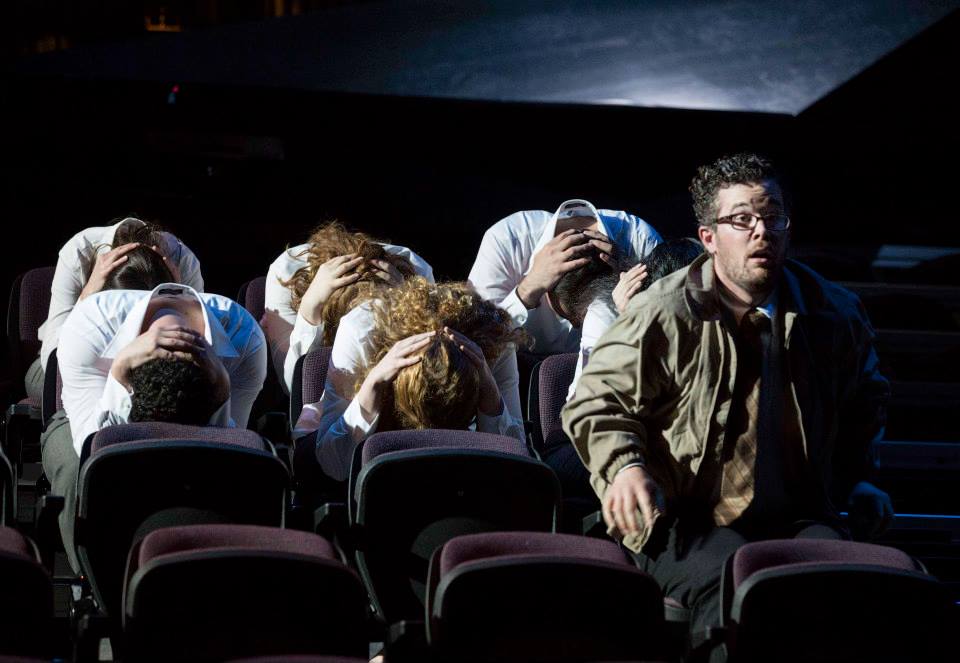 Airline Icarus is about the intersecting thoughts of passengers aboard a commercial airplane. It explores themes of hubris mixed with technology, the forced intimacy of strangers and flying too close to the sun. Over the course of the work, the plane becomes brighter and eventually vanishes.
Airline Icarus is about the intersecting thoughts of passengers aboard a commercial airplane. It explores themes of hubris mixed with technology, the forced intimacy of strangers and flying too close to the sun. Over the course of the work, the plane becomes brighter and eventually vanishes.
In September of 1983, a Korean commercial flight was shot down over the Soviet Union’s eastern coast. The Soviets said they thought it was a spy plane. Rather than hit the plane directly, the missile struck its wing, and the plane “fell like a leaf for an excruciating 12 to 15 minutes”. I couldn’t help but to think about the people aboard for years after. Later when visiting with Anton Piatigorsky, a fantastic playwright living in Toronto, I told him I was looking for ideas about theatrical works and mentioned the Korean airliner. Anton told me that he had just written a poem about the absurd little society we often take for granted aboard commercial flights and the unsettling mixture of hubris and technology: we’ll make small talk and watch movies while inches outside the window is a glorious cloudscape or freezing certain-death.
He also proposed the perfect metaphor for what we were trying to do: Icarus. Icarus , you’ll remember, flew too close to the sun and his wax wings melted and he fell to the earth in a blaze of light. His father, Deadalus, looked for him, crying: “Icarus, where are you!” and “Damn this art!”
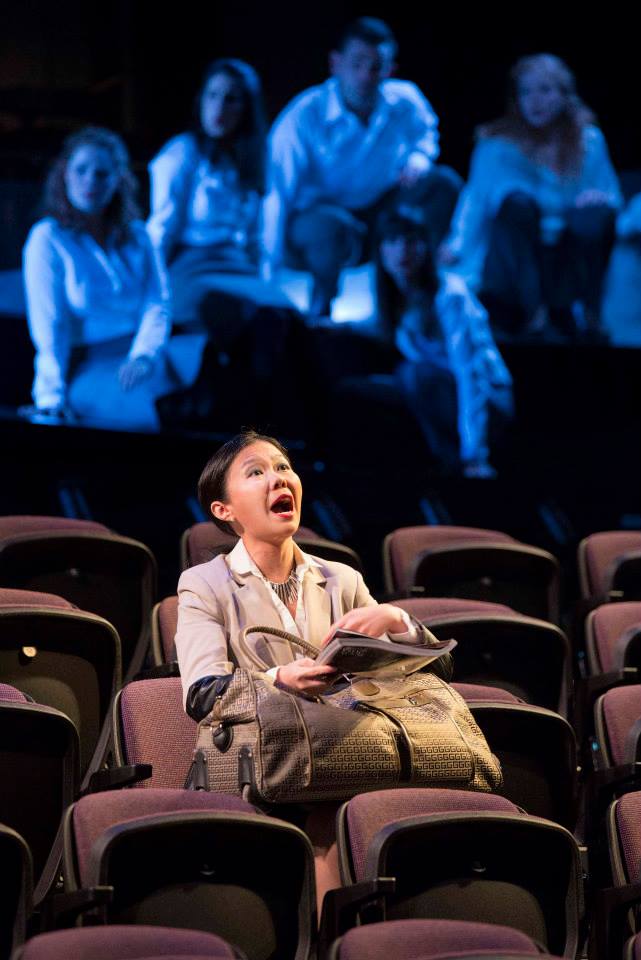 To me, one of the most interesting parts of the myth is that Icarus disappears, in much of the same way that people involved in airline tragedies disappear, or the way the astronauts of the Space Shuttle Columbia disappeared in a blaze of light over Texas.
To me, one of the most interesting parts of the myth is that Icarus disappears, in much of the same way that people involved in airline tragedies disappear, or the way the astronauts of the Space Shuttle Columbia disappeared in a blaze of light over Texas.
Deadalus’s cries of “Damn this art” are heartbreaking, not so much because Icarus has crashed and died, but more that he knows that we are doomed to keep building things- airplanes, computers, operas - in an endless cycle of trial and error that sometimes leads to disastrous consequences.
The development of Airline Icarus has followed a circuitous path to production and I’m very grateful to all the directors, curators and musicians who have supported the piece along the way. The work was commissioned in 2001 by Opera Breve Vancouver and composed between 2001 and 2005 in consultation with their director, the inimitable John Juliani. Workshops and excerpts were presented by Tapestry New Opera, Soundstreams, New York City Opera Vox Festival, Fort Worth New Frontiers and upcoming at Opera America in New York in 2014. In 2011, Airline Icarus was awarded the Italian Premio Fedora Award by a jury chaired by Louis Andriessen and received a staged premiere in Verbania Italy in April 2011, where I had a wonderful time on the podium working with passionate actors, designers and musicians from the Milan area.
In November 2012 it was presented in concert at The Royal Conservatory in collaboration with Maniac Star, the rehearsals of which formed the basis of a NAXOS recording which will be released this fall. I can’t tell you how thrilled I am that the fully staged Maniac Star production of Airline Icarus, directed by Tim Albery, will be presented as the final Soundstreams event of this season. Huge thanks go to Lawrence Cherney, who has been following the development of the piece since those early workshops in Vancouver, and to all those at Soundstreams for making this production possible.

